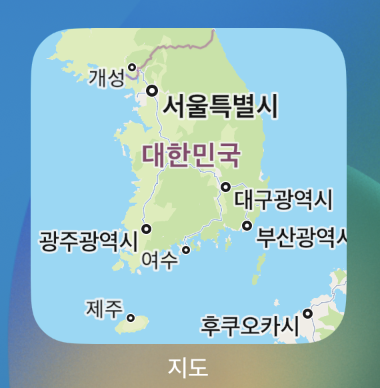1. Messages
메시지 전송할 때 사용됩니다. ”[ ]”로 싸서 표현합니다.
|
[receiver message] |
receiver는 변수, 자기자신, 클래스 이름등 사용 가능하며 메시지는 receiver에게 무엇이든 전달할 수 있다.
2. Defined Types
Objective-C에서 사용되는 주요 타입은 “objc/objc.h”에 정의되어 있다.
|
타입 |
정의 |
|
id |
객체를 가리킴. 인스턴스에 대한 포인터 |
|
Class |
클래스 자체에 대한 포인터 |
|
SEL |
메소드의 이름을 선택하기 위한 선택자, 이름과 모든 콜론(;)을 포함 |
|
IMP |
id를 리턴하는 메소드의 구현부에 대한 포인터 |
|
BOOL |
이진값. YES 또는 NO |
|
Nill |
Null object |
Preprocessor Directive(전처리기 지시자)
|
#import |
.h 헤더파일을 import |
|
#include |
.h 헤더파일을 include(#import와는 달리 여러 번 수행됨) |
|
// |
주석(comment) |
3. Compiler Directive
Complier 지시자는 “@”로 시작한다.
다음은 classes, categories, and protocols의 선언과 정의에 쓰이는 지시자이다.
|
Directive |
정의 |
|
@interface |
class 또는 카테고리 interface의 선언 시작 |
|
@implementation |
class 또는 카테고리의 선언 시작 |
|
@protocol |
형식 프토토콜 선언 시작 |
|
@end |
Class, category 또는 protocol의 선언/정의를 끝낸다. |
다음은 instance변수들의 visibility를 설명한 상호 배타적인 지시자이다.
|
Directive |
정의 |
|
@private |
instance변수의 범위를 그것이 선언된 class로 한정한다. |
|
@protected |
instance변수의 범위를 선언되고, 상속된 class로 한정한다. |
|
@public |
instance변수의 범위에 대한 제한을 없앤다. |
다음은 exception handling을 지원하는 지시자이다.
|
Directive |
정의 |
|
@try |
Exceptions이 던져질 수 있는 block을 정의한다. |
|
@throw |
Exception object를 던진다. |
|
@catch() |
@try bolck안에서 던져진 exception을 catch한다. |
|
@finally |
@try block에서 Exceptions가 던져지던 아니던 수행되어질 block code를 정의한다. |
다음은 declared properties feature를 지원하는 지시자이다.
|
Directive |
정의 |
|
@property |
Declared property의 선언을 시작한다. |
|
@synthesize |
Compiler에 custom implementations이 없는 accessor methods를 생성하도록 요청한다. |
|
@dynamic |
만약 이름이 따르는 properties와 관련있는 acessor methods의 implementation을 발견하지 못하면 compiler에게 warning을 생성하지 않도록 지시한다. |
추가적으로 특별한 목적을 위한 지시자들이 있다.
|
Directive |
정의 |
|
@class |
다는 곳에서 정의된 class들의 이름을 선언한다. |
|
@selector(method_name) |
Method_name을 식별하는 compiled selector를 리턴한다. |
|
@protocol(protocol_name) |
protocol_name protocol을 리턴한다.(protocol class의 instance). (@procotol은 forward declarations를 위해서는 (protocol_name)없이도 유효하다. |
|
@encode |
type_spec의 type structure를 encode한 char string을 가져온다. |
|
@"string" |
현재 모듈에서 Constant NSString object를 정의하고, 주어진 스트링으로 object를 초기화 한다. MAX OS X v10.4와 이전, string은 7-bit ASCII-encoded 이어야 한다. MAX OS v 10.5와 이후(Xcode 3.0과 이후), UTF-16 encoded string을 사용할 수 있다. (MAC OS v10.2와 이후는 UTF-16encoded string을 지원한다. 그래서 MAC OS X v10.2와 이후에서 만약 app를compile하기 위해 MAC OS X v10.5를 사용하면, UTF-16 encoded string을 사용할 수 있다.) |
|
@"string1" @"string2" ... @"stringN" |
현재 모듈에서 constant NSString object를 정의한다. 생성된 string은 두지시자에서설명된 string을 연결한 결과이다. |
|
@synchronized() |
한번에 한 thread에 의해서만 실행되어져야 하는 code의 block을 정의한다. |
4. Class
@interface 지시자로 선언된다.
#import "ItsSuperclass.h" @interface ClassName : ItsSuperclass < protocol_list > {instance variable declarations } method declarations @end |
자기 소유의 interface를 import할 때 선언하는 class.
#import "ClassName.h" @implementation ClassName method definitions @end |
5. Categories
Class와 동일하게 작성된다.
#import "ClassName.h" @interface ClassName ( CategoryName ) < protocol list > method declarations @end |
#import "CategoryName.h" @implementation ClassName ( CategoryName ) method definitions @end |
6. Formal Protocols(형식 프로토콜)
@protocol 지시자로 선언된다.
@protocol ProtocolName < protocol list > declarations of required methods @optional declarations of optional methods @required declarations of required methods @end |
@optional 다음 method가 optional이란 걸 설명한다.
@required 다음 method가 protocol을 채택한 class에 의해 implement되어야 함을 설명한다. Default값
@protocol ProtocolName protocol에 대한 forward reference를 만든다.
@protocol ProtocolName; |
소스내에서 protocol은 @protocol(protocol_name)와 비슷하게 사용되어 참조된다.
<protocol name list>는 다음 세가지 용도로 쓰인다.
- protocol 선언에서 다른 protocol들을 합치기 위해
- class나 category 선언에서, protocol을 채택하기 위해
- type 상술에서, type을 protocol을 따르게 하는 object에 한정하기 위해
|
Type Qualifier |
정의 |
|
oneway |
Method는 비동기적 메시지를 위한 것이고, 유효한 리턴타입를 가지지 않는다. |
|
in |
Argument는 remote receiver에 information을 pass한다. |
|
out |
Argument는 Reference에 의해 리턴된 정보를 get한다. |
|
inout |
Argument는 Information을 pass하고, get한다. |
|
bycopy |
Proxy가 아닌, Object의 copy로 pass나 return되어야 한다. |
|
byref |
현재 모듈에서 constant NSString object를 정의한다. 생성된 string은 두지시자에서설명된 string을 연결한 결과이다. |
|
@synchronized() |
Copy가 아닌 Object에 대한 reference로 pass나 return되어야 한다. |
7. Method 선언
“+” class method 선언
“-” instance method 선언
Argument와 리턴 타입은 C문법에서의 type casting하는 방법으로 선언된다.
Argument는 “:”다음에 선언된다.
- (void)setWidth:(int)newWidth height:(int)newHeight |
동일한 선언
- (void)setWidthAndHeight:(int)newWidth :(int)newHeight |
8. Method Implementations
각각의 method implementation은 두개의 숨겨진 인자가 넘겨진다.
- receving object(self)
- method selector(_cmd)
유효한 다른 리턴을 갖지 않은 Method는 전형적으로 void를 리턴한다.
9. Deprecation Syntax
@interface SomeClass -method __attribute__((deprecated)); @end |
#include <AvailabilityMacros.h> @interface SomeClass -method DEPRECATED_ATTRIBUTE; // or some other deployment-target-specific macro @end |
Objective-C 2.0 이후 버전에서만 적용됩니다.
10. Naming Conventions(규칙,틀)
Class, category, and protocol 이름을 대문자로, Methods, instance variables은 소문자로 시작
“_”로 시작하는 method는 Apply에서 사용되어지도록 예약된 것임
같은 클래스의 Protocol, category는 protected name space를 가지고 있어,
Protocol은 class, category, 그 밖의 것과 같은 이름을 가질 수 있고,
한 class의 Category는 다른 class의 category와 같은 이름을 가질 수 있다.
Class name은 global variables나 defined type 처럼 같은 name space를 가지고 있어,
프로그램은 class와 같은 이름의 global variables를 가질 수 없다.
출처 : http://www.howapp.com





